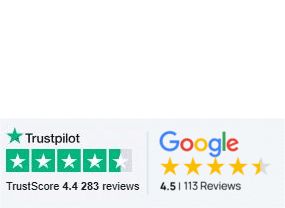Tips for Renting your Home During a Temporary Move Abroad

Get a Free Moving Quote Now!
Start Your International Moving Journey





When moving abroad, even temporarily, you may not want to give up your home in your native country. The good news is you don’t have to–you can rent it out to someone else. While it may seem like a difficult process, it doesn’t have to be. Keep these things in mind when renting out your home for a temporary move abroad.
First things first, do you own, rent or lease your home? If you own your home, you’re essentially free to do what you’d like with it–rent it out, sell it, etc. If you rent or lease your home or apartment, you’ll need to check your contract with your landlord to see if you’re legally allowed to sublet or rent our your home.
Time frame
Once you’ve figured out if you are in fact able to rent out your home, you’ll need to determine out a time frame. If you only want to rent out your home for a portion of the time you’re away, it’s entirely up to you. Perhaps you only want to rent out your home for some extra security while you’re away.

Renting out your home while you’re away is also a great option if you need to move for work but were unable to break your lease first. You could rent out your home when you move until the lease is up. After that it would be up to the landlord and the renter if they wish to sign a new contract.
How much to charge
If you own your home, you could rent it out for the total monthly amount of your mortgage. While you could charge whatever amount you want, you still need to be reasonable with your number. To figure out a per diem rate for renting out your house, divide your monthly mortgage by 30. This number could be a starting point for figuring out how much to charge for rent while you’re away.
If you’ll be away during the summer and you own a beach front property, you could increase the price for the premium location to make up for slower rental months in the winter. The reverse could also benefit you–if you own a home near a ski resort you could charge a premium for the winter months.
Listing and finding a tenant
Much like selling, you’ll need to create a listing for your rental. There are various listing sites that you’d be able to use to post your listing online. Word of mouth is also an valuable tool for finding a tenant. When advertising for a tenant, be sure to keep track of all the names and numbers of any interested parties. That way, you’ll be able to reach out to someone else should a tenant back out of the agreement.
Once you’ve found a few possible tenants, it’s imperative that you meet with them ahead of time. You should interview them and ask about their smoking habits, if they have pets and how long they plan on staying.
Remember, this person is going to be living in your home while you’re away, so you want to make sure that you feel comfortable with this decision before handing over the keys.

Writing the agreement
Provided you’ve already gathered all the necessary documents from a landlord or property management group, you can begin writing up your own lease agreement. It’s important to have a contract in place that protects both the current tenant and the subtenant
- State the name of both parties and the date of the contract
- The original leaseholder is known as the Tenant and the person subletting is known as the Subtenant
- Identify the property in question and what it will be used for
- Is it residential property or commercial property?
- Provide the term of the sublease
- State the date upon the sublease will begin and the date the sublease will end.
- State the amount of rent to be paid to the tenant and on which day.
- Include the name of who is to be paid and an address to which the rent must be sent.
- Security deposit should be included in the contract along with terms stating that the original tenant will inspect the apartment/home upon the ending of the lease agreement.
- Sign and date the agreement
- Tenant, Subtenant and Landlord (if applicable) should all sign and date the agreement.
Preparing your house for renting
Before you hand over the keys to the subtenant, be sure to pack up personal items you may be leaving behind and store them safely on an off-site location or in a part of the home that the subtenant won’t have access to. It’s also a good idea to leave a detailed letter for anything they may need to know about your home; how to use certain appliances, tips for using the heater or anything else that they may need to know while they’re staying in your home.
